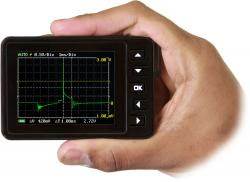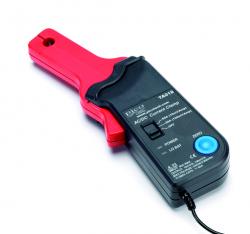I have a 98 Mazda 626 GF and I'd like to test the ignition coils with a multimeter to see if any of them are starting to fail. The car has ECU controlled timing / ignition and there are two coils, each one servicing two cylinders I assume.
-
Probably the most common problems to have with a HT coil is that the HT insulation will start to break down. You wont be able to test that with a multimeter.– HandyHowieCommented Mar 4, 2016 at 11:00
-
@HandyHowie So how could you test that?– Robert S. BarnesCommented Mar 4, 2016 at 11:39
-
You can sometimes see arcing in the dark, but that isn't guaranteed. Getting an electric shock off one is usually a good indication, but not a good idea to test it like that. Swapping the HT coil for a known good one is probably the simplest way to eliminate this.– HandyHowieCommented Mar 4, 2016 at 12:05
-
The MkIII Jetta is very prone to a cracking coil, and guys to the "spray test" on them. Wait till night time, and then spray around the coil with a spray bottle that makes a good, fine mist. Arcing will be noticeable if there are any cracks.– JPhi1618Commented Mar 4, 2016 at 12:45
-
Here are some additional multimeter points that may prove valuable. mechanics.stackexchange.com/questions/25816/…– DucatiKillerCommented Mar 8, 2016 at 23:39
4 Answers
To be honest you won't get far with a DVOM. While vini_i's answer is correct you can't do this while the car is running.
You should be looking into buying a digital storage oscilloscope if you want to test primary and secondary ignition.
The uScope is a good beginners scope:
Along with a low amp probe for testing the primary ignition coil:
And a secondary ignition probe:
You would have to set the scope to the scale of the probe most low amp probes are something like 1mV/A or 10mV/A. And clamp around the power wire to the coil.
An example of a known good primary coil on a 05 VW Touareg:
And an example of a known good secondary reading off a 05 Ford Taurus:
And here's a good article on ignition diagnostics.
http://www.autoserviceprofessional.com/article/92689/Waveform-diagnostics-Ignition-diagnostics-you-will-actually-use?Page=5
-
After learning allot more, and getting a scope, I can say unequivocally that your answer is the only correct answer. Commented Apr 3, 2018 at 22:29
-
@RobertS.Barnes a decent scope is so much more affordable now adays. If anyone wants to diagnose modern, or even older cars, it's an invaluable tool that doesn't cost much more than a decent multimeter. Plus it has many more uses than drivability diagnostics.– BenCommented Apr 3, 2018 at 23:07
There are three tests that can be preformed using a multi meter.
A DIS type coil that services two cylinders works like a transformer. The primary windings are controller by the ECU. The secondary windings are the output to the two cylinders. The primary and secondary windings should never touch.
Using the ohm function check the primary and secondary sides for opens or very high resistance. It is generally a good idea to compare multiple coils that are on the vehicle. If one of the windings is open the coil is most likely completely dead.
The thirds test requires having a multi meter that supports conductance. Many high end Fluke multi meters support this function. Conductance is the reciprocal of resistance. When using the ohms function and the leads aren't touching the meter reads OL. When using conductance the meter will read OL when the leads touch.
To test the insulation between the primary and secondary windings set the meter to conductance. Touch one lead to the primary and one lead to the secondary. The meter should not read OL. If it does then there is a path between the primary and secondary, kind of like touching the leads together. If the meter shows numbers that jump around then the coil is fine.
-
What I'm looking for is something that might cause it to intermittently misfire or generate a weak spark. Commented Mar 4, 2016 at 11:53
-
@RobertS.Barnes An unusually high resistance in a coil or if the conductance test fails are both reasons a coil could be weak or intermittent.– vini_iCommented Mar 4, 2016 at 12:12
-
Would the weakness show up on both plugs when you do a spark test, or only one? Commented Mar 4, 2016 at 13:01
-
@RobertS.Barnes Theoretically it would show up in both. Normally both plugs would get tested just to be sure.– vini_iCommented Mar 4, 2016 at 13:20
-
If I want to be checking for a path between the primary and secondary windings then shouldn't I just set the multimeter for continuity and check for that? Commented Mar 20, 2016 at 4:59
If you are looking for misfires then you best shot would be is to hook up a scanner tool, start the car and go through the statistics in the scanner which shows you about the misfires and a lot more data, buy a good scanner which costs about $80 but don't go with a cheap $20 one.
The misfires should be less than or equal to 5 in every 1000 if not then you might have to change the coil pack or fuel injector in the particular cylinder. most of the times the spark plug or the coil pack would be bad and these are not expensive when compared to a fuel injector.
-
Allot of older cars don't provide misfire data; my 98 Mazda 626 doesn't Commented Mar 5, 2016 at 16:50
-
@RobertS.Barnes There should be a mode $6 PID for misfire counts trip/and consecutive trip. Though actually finding the PID (if available) is the problem.– BenCommented Mar 18, 2016 at 21:59
-
@Ben I'm using the ForScan software, which exposes all or at least allot of the proprietary PID's for Ford and Mazda vehicles, and it doesn't show a misfire PID, so my guess is that there isn't one maybe because this is a European model which isn't 100% OBDII compliant. Commented Mar 19, 2016 at 17:11
-
@RobertS.Barnes I may have assumed the ECM/software would be the same between Ford and Mazda ECMs like in the early 2000's. Anyways check out totalcardiagnostics.com/support/Knowledgebase/Article/View/90/0/… for more info on the Ford Mode$6 misfire monitor. It's under the Misfires and Advanced trouble shooting section.– BenCommented Mar 19, 2016 at 23:42






